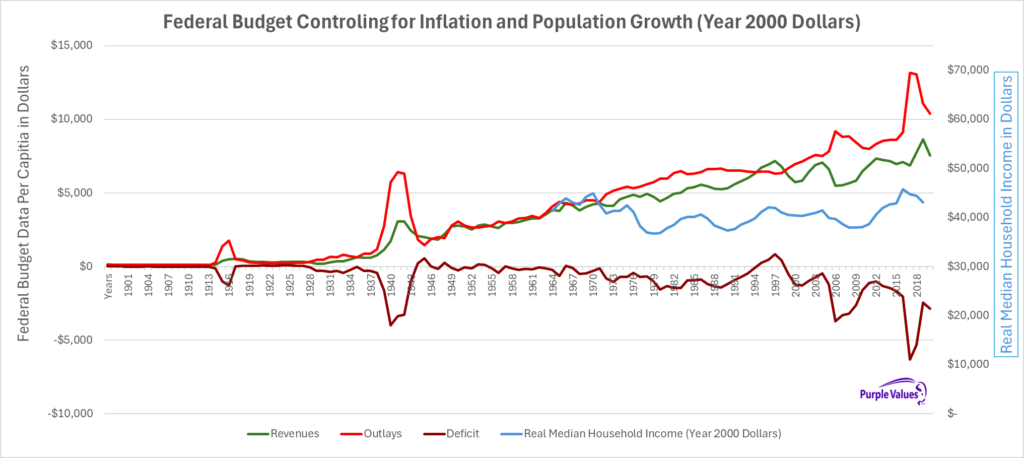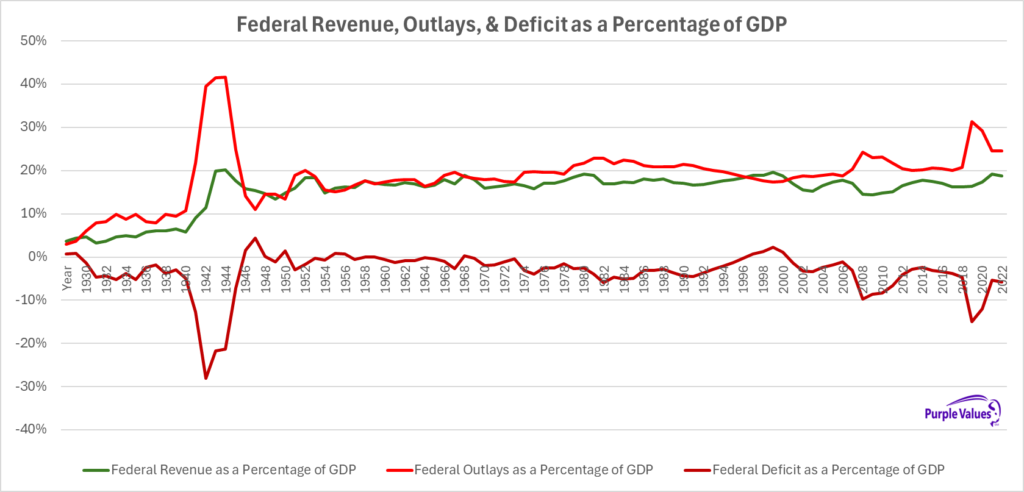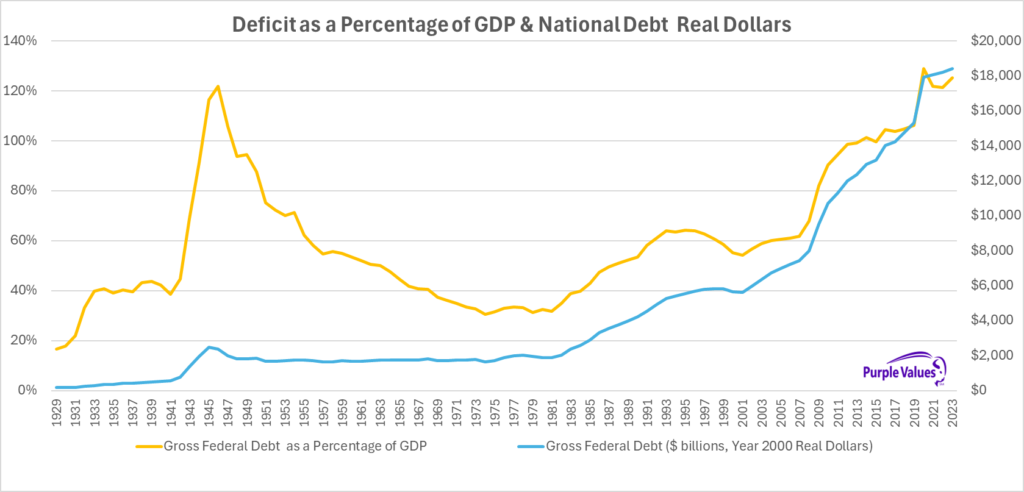Fiscal Responsibility
Why Fiscal Responsibility Matters
At Purple Values, we believe that responsible budgeting and sound fiscal policies are essential to a thriving democracy. A government’s ability to manage revenue, spending, and debt directly impacts economic growth, national security, and the financial well-being of future generations.
Understanding the Federal Budget
- The federal budget consists of three main components:
- Revenues – The government’s income from taxes and other sources.
- Outlays – Government spending on programs such as Social Security, healthcare, and defense.
- Deficit – The difference when spending exceeds revenue, leading to borrowing and increased national debt.
Historical Trends in U.S. Fiscal Policy
The following chart illustrates the growth of federal revenues, outlays, and deficits, adjusted for inflation and population growth:

- Key Takeaways:
- Government spending (red) has consistently outpaced revenues (green), leading to increasing deficits (brown).
- Significant spikes in spending and deficits align with historical crises, such as World War II and the 2008 financial crisis.
- While real median household income (blue) has grown, it has not kept pace with rising government spending and debt.
Federal Budget as a Percentage of GDP

- Key Takeaways:
- Federal outlays as a percentage of GDP (red) have steadily increased over time.
- Revenue as a percentage of GDP (green) has remained relatively stable, contributing to persistent deficits (brown).
- Periods of economic downturn and war result in sharp spikes in deficits.
Deficit and National Debt Growth

- This chart shows the long-term growth of the national debt and its impact on GDP:
- The gross federal debt (blue) has surged, particularly since the 1980s.
- Debt as a percentage of GDP (yellow) reached its highest levels during WWII and now it has reached new record levels.
- Key Takeaway:
- Without intervention, rising debt could lead to increased interest costs and economic instability.
The Long-Term Challenge
Without reforms, increasing deficits and a rising national debt may lead to:
- Higher interest payments, diverting funds from essential public services.
- Reduced economic growth due to crowding out private investment.
- Inflationary pressures that erode purchasing power.
Our Approach to Fiscal Responsibility
At Purple Values, we advocate for:
✅ Balanced budgets – Ensuring that government spending aligns with revenues over the long term.
✅ Transparent spending – Promoting accountability in government programs to minimize waste and inefficiency.
✅ Sustainable policies – Addressing entitlement reform and long-term fiscal planning to secure economic stability.
✅ Informed citizenship – Educating voters about fiscal policy to empower responsible decision-making.
Get Involved
Understanding fiscal responsibility is essential to making informed choices in elections and public policy. Join us in advocating for sustainable economic policies by engaging in discussions, attending events, and sharing knowledge.
📩 Stay connected: Sign up for our video podcast for insights on fiscal policy and responsible governance.
